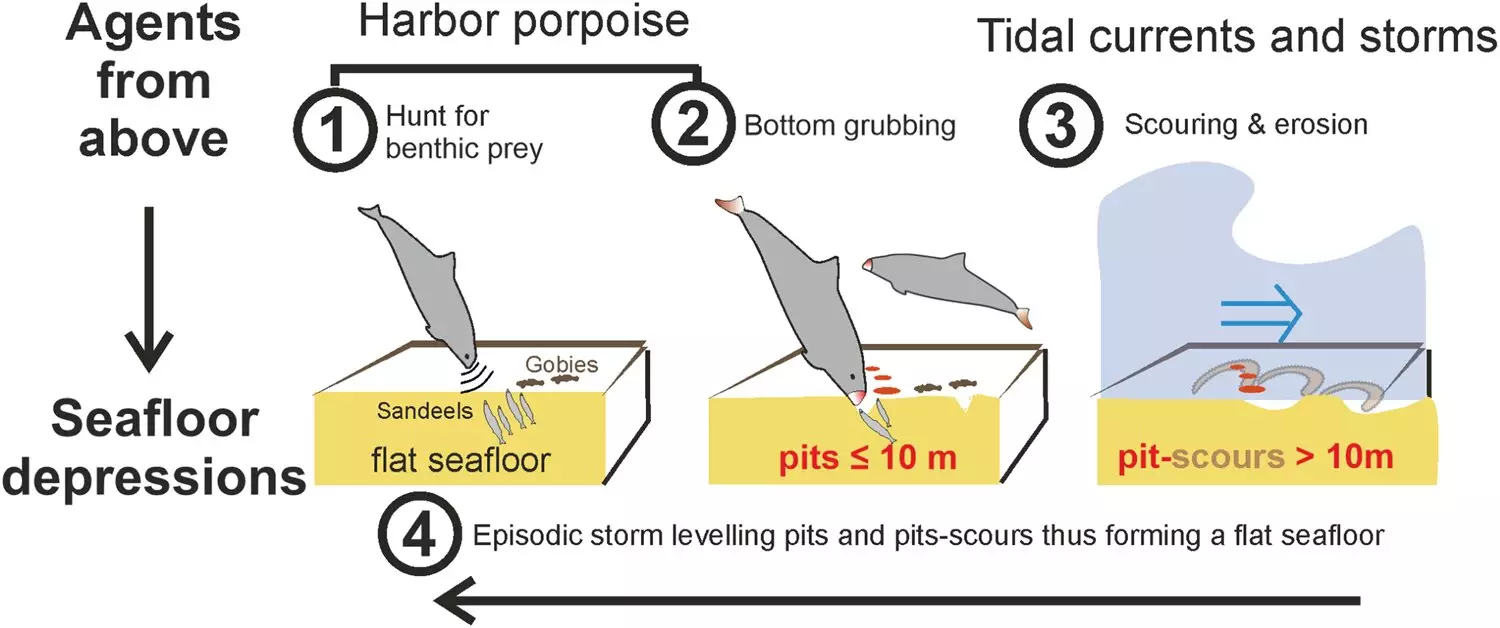The world’s oceans are teeming with life, and the creatures that inhabit them have a significant impact on the shape and structure of the seafloor. In a groundbreaking interdisciplinary study, researchers from Kiel University, together with colleagues from biology and oceanography, have examined the relationship between certain marine species and the formation of crater-like depressions on the floor of the North Sea. This research sheds light on the important role of vertebrates in shaping the seafloor and provides a new perspective on the mechanisms behind the formation of these depressions.
The seafloor of the North Sea is dotted with thousands of crater-like depressions known as pockmarks. These depressions have long puzzled researchers, as their formation could not be adequately explained by common scientific understanding of fluid seepage. However, the recent study conducted by Dr. Jens Schneider von Deimling and his team has revealed a previously unknown connection between pockmarks and the habitats and behaviors of porpoises and sand eels.
Through high-resolution data analysis, the researchers have shown that the depressions on the North Sea seafloor occur in direct connection with the presence of porpoises and sand eels, rather than being formed by rising fluids. The team suspects that most of the depressions in the German Bight are created by porpoises and other animals in search of food. They are then scoured out by bottom currents, with the sand eel playing a crucial role in this process.
Sand eels, small eel-like fish that spend most of the year buried in shallow sediments, are not only a popular food source for the fishing industry but also a significant part of the diet of porpoises in the North Sea. The researchers discovered that when porpoises hunt for buried sand eels, they create shallow pits in the seafloor. These pits, although resembling the familiar pockmarks, differ in their morphology and are much shallower. The discovery of these pits has only become possible in recent years, thanks to advancements in multibeam echosounder technology.
Dr. Schneider von Deimling, a renowned expert in seafloor mapping and methane gas seepage, states that the formation of these pits aligns with the existence of numerous crater-like depressions worldwide, which were previously misinterpreted as the result of methane gas leaks. By adopting an alternative hypothesis, the researchers were able to successfully predict the locations of potential porpoise feeding sites, which coincided with the discovery of the pits near sand eel habitats. This not only validates their hypothesis but also provides a conclusive explanation for the formation of the pits, supporting their harbor porpoise pits hypothesis.
The key to these groundbreaking findings lies in the interdisciplinary approach taken by the research team. Through the collaboration of geologists, geophysicists, biologists, and oceanographers, the researchers were able to analyze geological studies, geophysical sonar measurements, vertebrate behavior and feeding biology, satellite data, and oceanographic analysis. The utilization of modern echosounding methods allowed for precise measurements of the seafloor and the detection of these shallow pits. The analysis of vast amounts of data collected by research vessels was a monumental task but ultimately led to invaluable insights.
The discovery of the relationship between marine life and the formation of depressions in the seafloor has global implications. The research team believes that the initial feeding pits serve as a nucleus for scouring, eventually developing into larger pits. This process could modulate the seafloor on a global scale and significantly impact benthic ecosystems. In the study area alone, pits cover a staggering 9% of the seafloor, with an estimated deposition of over 773,000 tons of sediment. These findings have far-reaching geological and biological implications, allowing for a better understanding of the ecological risks associated with offshore activities and the potential for improved marine environmental protection.
The study conducted by the researchers from Kiel University has provided groundbreaking insights into the relationship between marine life and the shape of the ocean floor. By unraveling the mystery of pockmarks and identifying the role of porpoises and sand eels in their formation, the researchers have shed new light on the importance of vertebrates in shaping the seafloor. Their findings have significant global implications and open up avenues for further research into the ecological impact of marine life on benthic ecosystems.


Leave a Reply